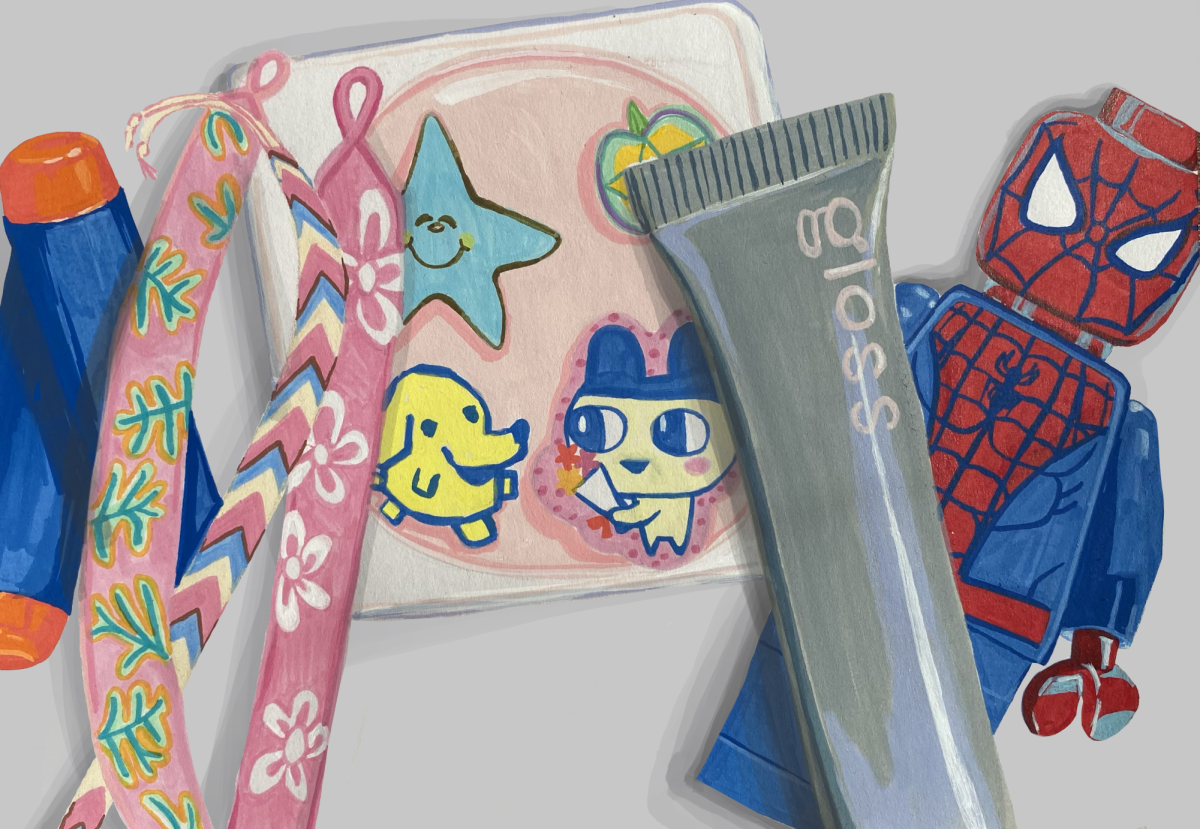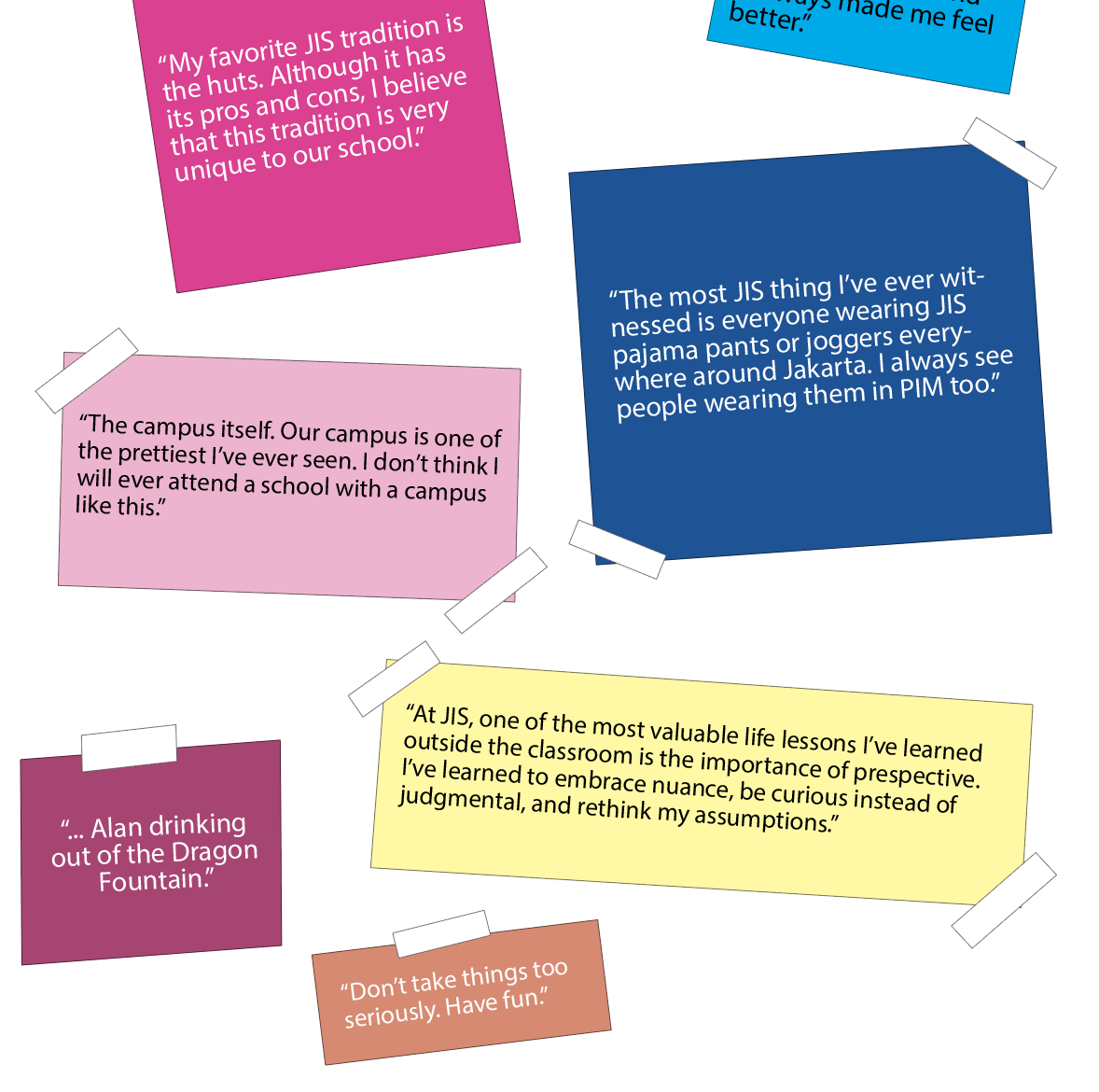Gaps in Transitioning
How does transitioning differ between grade levels?

An anonymous poll completed by the class of 2023 reveals the most challenging transitions between grade levels throughout high school.
Transitioning between different grade levels, especially in high school, can be daunting for many students. With increasing academic responsibility and logistical concerns about where things are and how things work, making a successful transition is linked with some apprehension. However, we can reduce feelings of unease through time and experience.
Grade 8 to 9
Among all survey participants, over 13% chose moving into freshman year as their hardest transition.
While sometimes underestimated, the experiences and concepts acquired during freshman year are the foundational building blocks for the remaining three years of high school. Because of this, most students undergo a newfound sense of anxiety during their first year.
One freshman notes that “high school feels a lot like entering a new school. Everything suddenly gets more serious.” Although many students claim to feel supported by teachers, the comfort of middle school is gone, while the demand for good academic performance is high. According to freshman Arkaitaz K., “it’s not easy with the invisible pressure to do better.” A few others also mentioned that shorter breaks and a lack of playground facilities contribute to the tensions of their surrounding environment.
Adapting to schedule changes while successfully locating new classes also requires time and practice. Nonetheless, these little confusions can seem overwhelming during the first few days of school. One freshman admits that “identifying different modules is difficult” when the high school campus “seems so much larger than the middle school.” Freshman Rayya S. concurs: “I also got a bit confused when locating my classes on the first week back.”
Another prominent difference between high school and middle school stems from the grading curriculum. Unlike high school, middle school academics does not consist of letter grades or GPA. As one freshman states, “it’s either pass or fail, mastering or approaching, which is 50% above or below average.” By moving from two to numerous criteria, students find that there are more detailed requirements to fulfill in the long term. Alongside the strains of increasing academic workload, this contributes to feelings of frustration.
Despite these challenges, the transition from middle school to high school is still exciting as it signifies the possibility of new beginnings. “I get a fresh start and a chance to do better,” says one freshman. Alongside new beginnings come unexpected opportunities. In freshman year, one of these opportunities includes freedom in course selections. Freshman Nathan L. mentions that “being able to choose and select classes enhances freedom, individualism, and self-expression.”
Top 3 Tips
- Ask questions: Asking questions is a great way to communicate and connect with others. Don’t be afraid to gain clarification to ensure you thoroughly understand different terminologies and concepts. It’s better to get the help you need than move forward confused and frustrated.
- Build relationships with teachers & students: You have incredible teachers and peers supporting you here at JIS; don’t let that opportunity go to waste.
- Choose classes you will enjoy: Select classes that genuinely pique your interest! Don’t just choose for the sake of being in the same class as your friends; what fits others might not suit you.

Grade 9 to 10
Around 50% of interview respondents found the transition into sophomore year to be the least challenging. Compared to the previous year of struggling to adapt to high school, sophomore year tends to be a bit more enjoyable for many students.
“There was basically no change,” says one student. “It was least challenging because the curriculum and workload were about the same.”
According to numerous testimonies, most of the coursework and assessment styles are similar between freshman and sophomore years. This makes the difficulty level of classes seem more feasible and tolerable.
A couple of students also mentioned that sophomore year allowed for even more flexibility in course selections compared to the previous year. As mentioned by one student, “I was able to explore more specific interests such as biology and genre-based English. This made classes more interesting and engaging.”
However, no transition comes without its challenges. By this time, many sophomores feel pressured to participate in more extracurricular activities, whether for CAS requirements or building leadership experiences. For example, sophomore Abigail A. is currently joining the school musical and other sports activities. After attempting to balance out her schedule, she explains that “simultaneously doing extracurriculars with academic work is challenging, but [students] are still expected to keep up with everything.”
Top 3 Tips
- Stay committed to 2-3 clubs: By now, you should be exploring which clubs align more with your specific interests and passions. Don’t overburden yourself by signing up for too many unrelated extracurriculars.
- Don’t be afraid to try out for leadership positions: Be confident! This is the perfect time to expose yourself to various clubs while getting more involved in its opportunities. However, do keep in mind that being a leader demands diligence, perseverance, and responsibility.
- Plan ahead when given the opportunity: Compared to other grade levels, sophomore year is when most people tend to have a bit more flexibility in their schedules. If the same applies, utilize some of that extra time to look and plan ahead. This can be related to academic tasks, preparing for the SAT, researching about different universities, and so forth.
Grade 10 to 11
Nearly 74% of survey participants selected sophomore to junior year as their most challenging transition. Among those responses, 90% attributed such struggles to the rigors of the Advanced Placement (AP) and International Baccalaureate (IB) programs.
Created by the College Board, the AP program allows students to pursue diverse college-level courses with corresponding exams administered every year in May. This makes most AP courses challenging for their rapid pace and substantial class coverage material.
Junior Jakob G. acknowledges that “as someone taking the AP Capstone, things have been naturally stressful for [him].” With AP classes being a one-year course, Jakob recognizes how “classes move more quickly, and there’s not as much time to get all the material down.” Junior Benjamin K. agrees, “for classes like AP US History, the amount of workload and memorization is huge, so I need to utilize my time efficiently.”
Meanwhile, the IB is a two-year program that offers strong academic and personal skills upon successful completion of the Diploma Programme (DP). To earn the IB diploma, students are required to take a minimum of three Higher Level (HL) and Standard Level (SL) classes. They must also fulfill the following core requirements: CAS, TOK, and the Extended Essay.
One senior vouched, “procrastination is not an option for the IB.” Alongside other obligations, the IB program has a heavy emphasis on critical thinking and application-focused evaluations. This makes time management one of the hardest aspects of the IB program. “Moving into IB was hectic last year,” attests another senior. “The change in content, workload, and assessments were much harder than expected.”
Although each program varies in different aspects, both require long hours of dedication and perseverance from their students. Undoubtedly, the leap from the JIS curriculum to AP and IB classes can only be somewhat strenuous.
Top 3 Tips
- Know your boundaries: Don’t force yourself to sign up for too many AP classes or higher level IB classes. This will only decrease your chances of success; quality over quantity. Instead, give yourself more space to breathe and select classes that you know you can handle.
- Utilize honor passes and SLA to maximum potential: Do not procrastinate. Moving into the AP and IB program is far from easy. Utilize every given opportunity to get work completed on time. This will save you from many hardships in the future.
- Develop good studying habits, techniques, and routines: Once you arrive home from school, get into the habit of completing your work right away. Try not to have any distractions, such as your phone, next to you while working. Be sure to take good notes and complete given class readings or practice exercises for better comprehension. Finally, have a set timetable outside of school that designates a separate time for completing any unfinished, ongoing, or upcoming tasks.
Grade 11 to 12
After the frenzy of junior year, most seniors are already accustomed to the AP and IB system. At this point, students better know each program’s exact requirements and expectations, making transitioning less complicated. A senior taking the AP program claims that “moving into senior year, [she] already knew what [she] needed to do, which made things easier.” An IB senior confirmed, “Moving into the second year of IB just felt like another extended year.” Another advantage of senior year arises from the luxury and perks of senior privileges. Multiple students agreed that having the liberty to come or leave campus as they please permitted more “flexibility” and “ease.”
However, one of the hardest aspects of senior year is the burden of college applications. Besides attending classes, extracurricular activities, and maybe even out-of-school internships, seniors must deal with applying and preparing for college. For many students, this experience can come across as nerve-racking. “Creating the ‘perfect’ college application really gets troublesome,” confesses one senior. “There’s this pressure to do well and more, from excelling in academics and the SAT to gaining award titles and scholarships.”
Although each program varies in different aspects, both require long hours of dedication and perseverance from their students. Undoubtedly, the leap from the JIS curriculum to AP and IB classes can only be somewhat strenuous.
Top 3 Tips
- No one is a “perfect“ applicant: Don’t feel like you need to invent a “perfect” version of yourself for an ideal college resume. Rather, take this as an opportunity to express your individuality; your sincerity will show better.
- Remember to take occasional brain breaks: Between creating and submitting college resumes, try taking a few brain breaks to prevent burnout. Do something you enjoy and resume your work with a clear state of mind.
- Finish strong: You’re almost at the finish line! Don’t give up now, especially when you’ve worked hard over the past three years of high school!

With her ever-growing fondness for the English language and visual art, Katie is an aestheticist who loves to savor all things beautiful in the world....
Despite her love for art, Rachel was always hesitant to share it. But ever since the first illustration she submitted for the magazine as a contributing...

































